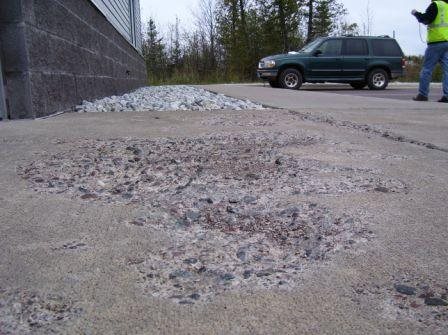Is stamped concrete bad for the environment?

Stamped concrete is a popular choice for outdoor surfaces due to its versatility, durability, and aesthetic appeal. It is a cost-effective alternative to natural stone or pavers, offering a wide range of design options. However, like any construction material, there are considerations to be made regarding its impact on the environment. In this article, we will explore the environmental aspects of stamped concrete and whether it can be deemed as “bad” for the environment.
To understand the environmental impact of stamped concrete, we need to examine its lifecycle, from production to installation and maintenance. One of the primary concerns regarding any construction material is its carbon footprint, which includes the energy consumed and the greenhouse gas emissions produced during its manufacturing process. Stamped concrete is typically made by mixing cement, aggregates, water, and chemical admixtures. The production of cement, a key component of concrete, is known to be energy-intensive and releases a significant amount of carbon dioxide (CO2) into the atmosphere. However, advancements have been made in the cement industry to reduce its environmental impacts, such as the use of alternative materials, improved kiln technologies, and carbon capture and storage techniques.
Another aspect to consider is the use of aggregates in stamped concrete. Aggregates, such as crushed stone, sand, or gravel, are mined from natural resources. The extraction of these materials can have environmental consequences, including habitat destruction, soil erosion, and water pollution. However, responsible mining practices, such as land reclamation and sediment control measures, can mitigate these impacts.
During the installation phase, stamped concrete offers certain advantages that can contribute to its environmental friendliness. Firstly, it requires less material compared to other options like natural stone or brick pavers, resulting in reduced resource consumption. Additionally, stamped concrete eliminates the need for grout lines, which can harbor weeds and require chemical treatments for maintenance. This reduction in the use of chemicals can be beneficial for the environment.
In terms of maintenance, stamped concrete is relatively low-maintenance compared to other outdoor surface materials. Regular cleaning and sealing can help extend its lifespan and preserve its appearance. However, the choice of cleaning and sealing products can influence the environmental impact. Opting for environmentally friendly cleaners and sealers, which are free from harmful chemicals and biodegradable, can minimize any potential negative effects.
It’s worth noting that the environmental impact of stamped concrete can vary depending on regional factors, such as the availability of local materials and the energy sources used during production. Using locally sourced materials can help reduce transportation emissions associated with long-distance hauling. Additionally, choosing suppliers and contractors who prioritize sustainable practices and employ eco-friendly technologies can further mitigate the environmental impact.
To determine whether stamped concrete is “bad” for the environment, it is important to compare it to alternative materials. While natural stones or pavers may have a more natural and eco-friendly appeal, they often come with higher costs and resource requirements. Stamped concrete can provide a durable and visually appealing alternative that can mimic the look of these natural materials without the same environmental drawbacks.
In conclusion, while stamped concrete does have some environmental considerations, it is not inherently “bad” for the environment. Its impact can be mitigated through responsible manufacturing practices, the use of environmentally friendly maintenance products, and conscious choices made during installation. As with any construction material, the key lies in understanding and implementing sustainable practices throughout its lifecycle to minimize its environmental footprint.




